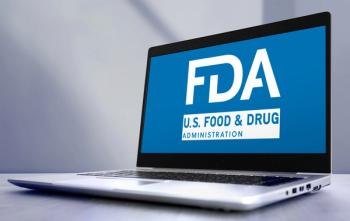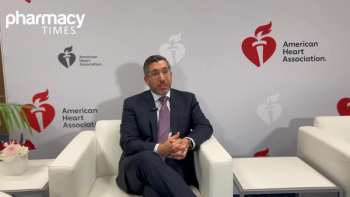
Community Pharmacies Implement Innovative 24-hour Ambulatory Blood Pressure Monitoring Service
Accurate blood pressure measurement is crucial to diagnose hypertension and guide treatment.
"We all know hypertension (HTN) is a problem. Based on new guidelines, one in two Americans have HTN, and only one in four have it under control. Sometimes it's easily overlooked in a busy clinical practice," stated Dixon.
Accurate blood pressure (BP) measurement is crucial to diagnose HTN and guide treatment. Out-of-office blood pressure monitoring may help confirm diagnosis, manage therapy, and better predict cardiovascular morbidity and mortality risk than office-based BP measurements.
Twenty-four-hour ambulatory blood pressure monitoring (ABPM) has some advantages over home blood pressure monitoring, including the ability to detect elevated BP patterns during sleep indicative of greater cardiovascular risk, the lack of reliance on proper technique for accuracy, and eliminating the need for long-term BP monitoring.
Although
Dixon partnered with
Both pharmacies had physician practices with at least one provider relationship and marketed the ABPM service to other physician groups.
"That initial marketing was important. We found out that there was more interest than anticipated and ended up enrolling 52 patients in just under six months," Dixon said.
The process was simple. Providers faxed a 1-page referral form, previously distributed to them, with the patient's and provider's contact information, reason for referral, BP goal, and last three office BP readings. Once the pharmacy received the referrals, the technician called the patient to provide some instructions and set up two appointments to fit and return the device.
When the patient came to the pharmacy, the technician fitted the patient with an appropriately sized ABPM device. They also provided essential counseling points for proper use of the device, answering any patient questions.
"My biggest goal was to put them at ease, make sure they were asking necessary questions, that it was comfortable for them, go through the benefits, and do's and don’ts," said
When the patient returned the device to the pharmacy at the next scheduled appointment, the results were downloaded and printed. The pharmacists reviewed the report for clinical "red flags," necessitating an immediate call to the provider. After conducting the clinical overview with the patient, the pharmacist faxed the information to the referring provider and educated them to follow up with the provider.
The most common BP phenotypes identified during the ABPM study were nocturnal HTN (91.3%), nondipper (52.1%), and sustained HTN (41.3%).
Dixon elaborated, "there were 2 occasions when fairly immediate phone calls to the referring provider occurred because the blood pressure data confirmed significant hypotension. Being able to see what the patient's blood pressure is running at home throughout the day can be very useful."
To optimize workflow, the trained pharmacy technician took care of the technical aspects and addressed the patient's concerns, allowing the pharmacist to provide the clinical overview.
Eighty-eight percent of patients participating in the study agreed or strongly agreed that they were satisfied with their experience using the service, and 96% of patients found it easy to go to a community pharmacy to undergo ABPM.
Dixon identified reimbursement for ABPM services as an obstacle. However, during the study, CMS expanded the reimbursement coverage of ABPM. Bremo Pharmacy continues to provide ABPM services but now charges a fee. "Patients are willing to pay cash for it, but not everyone, and not everyone that needs it. Considering it is a coverable code, if we could find some way for pharmacies to get reimbursed, I feel like the sky's the limit," said
"That's where a follow-up study with a more clinically-oriented outcome can illustrate the value of the service in terms of reducing overtreatment. If we can illustrate value, that creates an opportunity when it comes to payers to discuss expanding coverage and allowing pharmacies to bill for the service," Dixon added.
"There is an obvious tie into community pharmacies to play a role. We don't need more data to say that pharmacists can improve HTN outcomes,” Dixon said. “We are looking for a different role for pharmacists to help with ABPM, but broadly speaking, there are missed opportunities for community pharmacies and pharmacists to play a huge role."
Bremo and Buford Road Pharmacy are part of the
The
Newsletter
Stay informed on drug updates, treatment guidelines, and pharmacy practice trends—subscribe to Pharmacy Times for weekly clinical insights.















































































































































































































